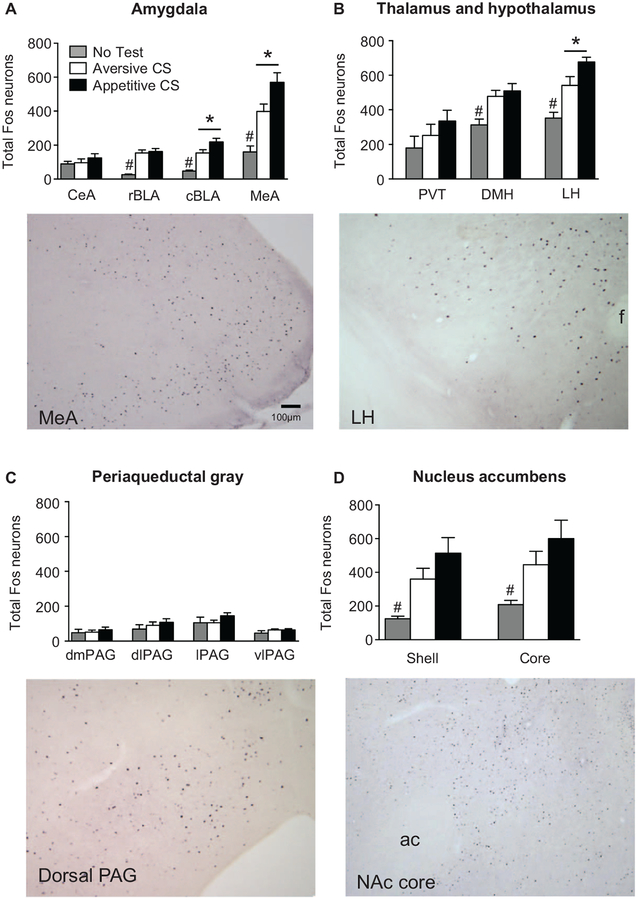Figure 3.
Fos expression after cue-induced food seeking after punishment. (A) In the caudal basolateral amygdala (cBLA) and the medial amygdala (MeA), rats tested with the appetitive conditioned stimulus (CS) had significantly higher numbers of Fos-positive cells compared to rats tested with the aversive CS. In the rostral BLA (rBLA), cBLA, and MeA, no-test rats had lower numbers of Fos-positive neurons compared to rats exposed to the appetitive and aversive CS. No differences in the number of Fos-positive cells across treatment groups was observed in the central amygdala (CeA). (B) Rats tested with the appetitive CS had significantly increased numbers of Fos-positive cells in the lateral hypothalamus (LH) compared to rats exposed to the aversive CS. Additionally, no-test rats had significantly lower numbers of Fos-positive cells in both the LH and dorsomedial hypothalamus (DMH) compared to rats tested with either an appetitive or aversive CS. (C) There were no significant differences in the number of Fos-positive cells across treatment group in the paraventricular thalamus (PVT). (D) There were no significant differences across treatment groups in the number of Fos-positive neurons in any subregion of the periaqueductal gray (PAG), including the dosomedial (dmPAG), dorsolateral (dlPAG), lateral (lPAG), and ventrolateral (vlPAG) regions. In the nucleus accumbens shell and core, the no-test group had lower numbers of Fos-positive cells compared to the appetitive CS group. * p < .05, # p < .05, no-test group significantly different from both the appetitive and aversive CS groups; $ p < .05, no-test group significantly different from the appetitive CS group. Appetitive CS group, n = 9; aversive CS group, n = 8; no-test group, n = 4; f = fornix; ac = anterior commissure.

